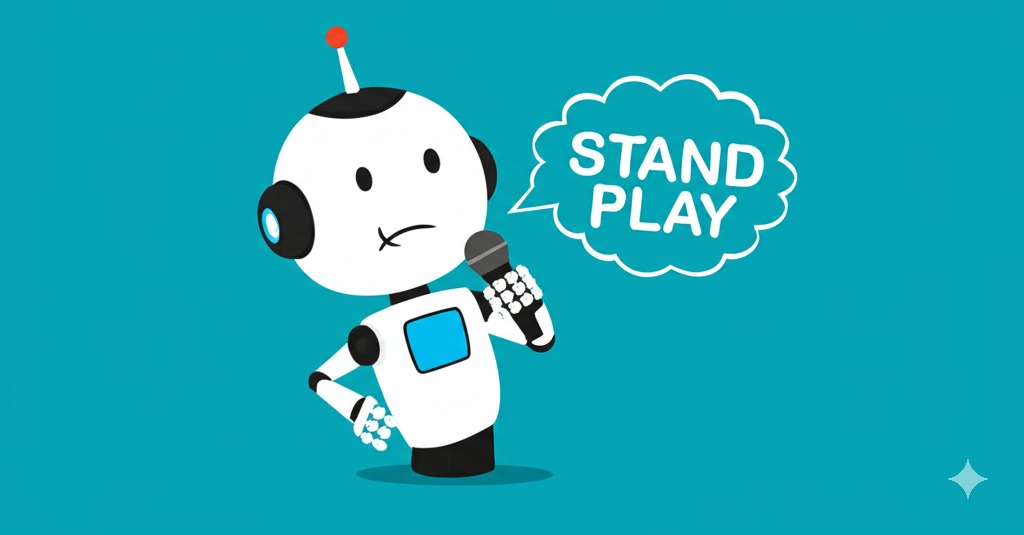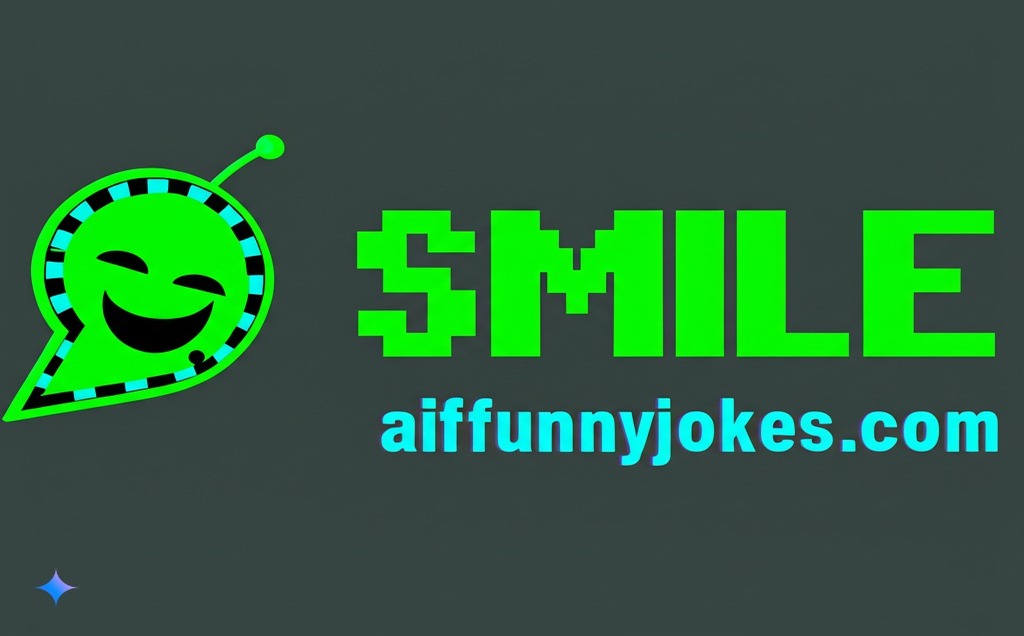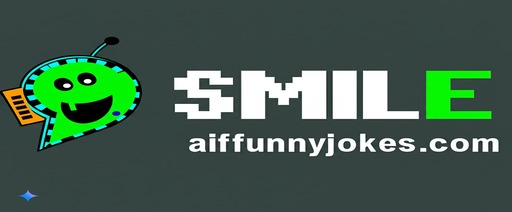
Ethical concerns with AI jokes are like that moment when your drunk uncle starts telling stories at Thanksgiving dinner—except the uncle is a billion-dollar algorithm that never gets tired, never feels shame, and can reach millions of people instantly. As artificial intelligence becomes everyone’s comedy sidekick, we’re discovering that teaching machines to be funny without being offensive is trickier than teaching a cat to respect personal boundaries.
Ethical Concerns with AI Jokes – Why They Matter
Ethical concerns with AI jokes aren’t just some professors clutching their tweed jackets or moral panic from the easily offended. When an AI chatbot cracks jokes about sensitive topics, it can spread harmful stereotypes, reopen wounds for trauma survivors, or turn marginalized groups into punchlines without having a clue about the real-world impact of those words.
Unlike your buddy who reads the room before dropping that questionable joke, AI has neither social awareness nor the ability to notice when someone’s laugh is actually a grimace. It’s like handing a megaphone to someone who learned about human interaction exclusively from reality TV marathons—technically informed but completely missing the point.
These concerns grow more urgent as AI comedy tools become more accessible. From Twitter bots generating one-liners to sophisticated language models writing sitcom scripts, AI-generated offensive humor is no longer a theoretical problem but a daily reality requiring thoughtful solutions.
Want to see examples of AI humor that stays on the right side of the line? Check out these short funny jokes about AI that poke fun without causing harm.

Can AI Understand What’s Offensive?
The short answer? No. Not really. AI systems don’t “understand” anything—they predict patterns in language without grasping meaning or emotional impact. This fundamental limitation creates a perfect storm for inappropriate AI jokes.
AI creates jokes using math, not empathy. It learns that certain word patterns make humans go ‘haha’ but has zero understanding of why laughing at someone’s expense might hurt them. The line between clever comedy and straight-up cruelty often comes down to tiny social cues, shared cultural knowledge, and power dynamics—subtleties that machines just don’t get.
Take this seemingly harmless AI joke: ‘What’s the difference between a lawyer and a vampire? One sucks the life out of you and leaves you broke, the other just wants your blood.’ Now swap ‘lawyer’ with any racial, religious, or gender group. Same joke structure, wildly different ethical territory
Ethical concerns with AI jokes emerge precisely because algorithms can accidentally wander into offensive territory without malice but with real consequences. They’re like social bulldozers, unaware of the china shop they’re demolishing.
For examples of humor that works without targeting vulnerable groups, browse these classic joke formats that stand the test of time.
Real-Life Cases Where AI Jokes Crossed the Line
3 Notorious AI Joke Fails and Their Fallout
When AI humor gone wrong hits the public sphere, the fallout can be swift and significant. Here are three real cases that illustrate these risks:
- The Healthcare Chatbot Debacle (2023). A medical assistance chatbot was asked about coping strategies for depression. It suggested “humorous” coping mechanisms including: “Have you tried turning your depression off and on again? Sometimes the human brain just needs a reboot!” For people struggling with serious mental health issues, this trivializing response wasn’t just unfunny—it was potentially harmful. The company issued an apology and implemented new safeguards after mental health advocates raised concerns.
- The Brand Campaign Catastrophe (2022). A major beverage company used AI to generate “edgy” social media content. One automatically generated post included a joke comparing their product’s refreshing taste to “finally getting out of a third-world country.” The post reached millions before being removed, sparking boycotts and demonstrating how responsibility in AI comedy. is essential for brands. The company fired their digital agency and pledged to implement human review for all AI-generated content.
- The Comedian’s Virtual Assistant (2024). A popular stand-up comedian used AI to help write material for a special about cultural differences. The AI suggested jokes that relied on outdated racial stereotypes the comedian didn’t immediately recognize as problematic. After including several in his Netflix special, the backlash was immediate and severe. This case highlighted how even professional comedians might not catch AI comedy controversies before they go public.
These incidents demonstrate how ethical concerns with AI jokes can damage reputations, hurt real people, and undermine trust in technology. They also show that harm can occur despite good intentions when proper safeguards aren’t in place.
For humor that’s been vetted by human understanding, check out these profession-specific humor examples that find comedy in shared experiences rather than stereotypes.
What Makes These AI Jokes Problematic?
AI-generated offensive humor typically becomes problematic for several key reasons:
- Lack of Contextual Understanding. AI doesn’t grasp historical context. A joke about poverty, slavery, or genocide might follow the same linguistic pattern as a joke about traffic, but lacks awareness of the immense suffering behind those topics. For example, an AI might generate: “I’m so broke I can’t even pay attention,” but then use the same structure for jokes about serious trauma.
- Inability to Recognize Punching Down. Good comedy “punches up” at power structures, not down at vulnerable groups. AI doesn’t recognize power dynamics, so it treats all subjects as equally valid targets. This is why machine ethics in humor requires human oversight—algorithms don’t innately understand why jokes about oppressed groups differ from jokes about privileged ones.
- Amplification of Stereotypes. AI learns from data that may contain biases and stereotypes. Without careful filtering, it can perpetuate and amplify harmful tropes. One AI system generated: “Why don’t women need watches? There’s a clock on the stove.” It learned the structure of jokes that rely on sexist stereotypes without understanding why they’re problematic.
- Missing Non-Verbal Cues. Human comedy relies heavily on delivery, timing, and audience relationship. AI misses these elements entirely, creating what some researchers call the “context collapse” problem in dark side of AI jokes. A human comedian might tell a sensitive joke to a specific audience who understands their intentions, but AI broadcasts to everyone without calibrating.
The core issue is that ethical concerns with AI jokes stem from AI’s fundamental limitations in understanding humanness—the lived experiences, cultural contexts, and emotional nuances that make certain topics sensitive in the first place.
Who Is Responsible for Ethical Concerns with AI Jokes?
The Role of Developers and Companies
Who is responsible for offensive AI jokes isn’t a simple question. The chain of responsibility includes:
- Developers and Engineers. The people who build AI systems make crucial decisions about training data, filtering mechanisms, and what types of outputs are permitted. When Microsoft’s Tay chatbot infamously began spewing racist jokes after learning from Twitter users, it revealed gaps in how developers anticipated misuse.
- Companies Deploying AI Products. Organizations that put AI tools in consumers’ hands bear responsibility for how those tools behave. After a major AI assistant generated jokes mocking religious practices, the company implemented new content policies and created an ethics board with diverse religious representatives.
- Platform Owners. Social media and content platforms that allow AI-generated content must decide how to moderate this material. Several platforms now require disclosure when content is AI-generated and have specific policies addressing AI joke moderation.
- End Users People who prompt AI to create jokes also bear some responsibility, especially when deliberately trying to evade safety measures or generate offensive content. Some systems now track user behavior and restrict access for those repeatedly requesting problematic material.
The distributed nature of this responsibility chain creates accountability gaps that companies and regulators are still working to address. Ethical concerns with AI jokes require a collaborative approach across this entire ecosystem.

The Importance of Ethical Guardrails
To address why AI humor can be dangerous, companies are implementing various safeguards:
- Pre-training Filtering Developers increasingly filter training data to reduce exposure to offensive jokes, limiting what the AI can learn and potentially reproduce. This approach is controversial, with some arguing it creates unhelpful blindspots.
- Output Moderation Most commercial AI systems now include filters that block clearly offensive content. The challenge is calibrating these filters—too restrictive, and harmless jokes get blocked; too permissive, and harmful content slips through.
- Human-in-the-Loop Reviews Some companies employ human reviewers to spot-check AI joke outputs, especially in high-risk contexts like content for children or sensitive cultural topics.
- Transparent Labeling Increasingly, AI systems identify when they’re making jokes or humorous content, allowing users to adjust their expectations and providing potential offramps if the content seems inappropriate.
These guardrails attempt to balance creativity with responsibility, though perfect solutions remain elusive. Ethical concerns with AI jokes will likely require ongoing refinement as technology and social norms evolve.
For examples of humor that works well within ethical boundaries, see these hilarious robot jokes that poke fun at technology itself rather than human differences.
Should AI Be Allowed to Make Jokes About Everything?
The Balance Between Free Expression and Harm
The debate about ethical issues in AI comedy generation often centers on freedom versus protection. Key perspectives include:
Arguments for Fewer Restrictions:
- Comedy has always pushed boundaries
- Offense is subjective and impossible to completely avoid
- Over-restriction stifles creative expression
- Users should have freedom to generate content they want
Arguments for Stronger Guardrails:
- AI-generated content can scale harmful impacts exponentially
- Without human judgment, AI lacks crucial ethical brakes
- Marginalized groups bear disproportionate harm from offensive humor
- Companies have responsibility to prevent foreseeable harm
Finding the right balance means acknowledging that both creativity and protection matter. Perhaps the question isn’t whether AI should joke about everything, but who should decide its limits, through what processes, and with what accountability.
Ethical concerns with AI jokes force us to confront difficult questions about free expression in an age where content can be mass-produced by algorithms without human discernment. The stakes are high: too restrictive, and we lose valuable creative tools; too permissive, and vulnerable communities bear the cost.
Future Solutions for Safer AI Comedy
Solutions to AI-generated offensive humor are emerging through both technical and social approaches:
- Value Alignment Techniques New methods like constitutional AI and reinforcement learning from human feedback (RLHF) help systems better align with human values, including understanding which jokes cross ethical lines.
- Diverse Feedback Panels Some developers now employ diverse panels representing different backgrounds to evaluate AI humor, ensuring systems learn from varied perspectives about what’s acceptable.
- User Control Systems More sophisticated content settings allow users to set their own boundaries, with AI adapting its humor style from “very conservative” to “more adventurous” based on preference.
- Context-Aware Systems Next-generation AI may better understand situational factors—like whether a joke is for a corporate presentation or an adults-only comedy show—and adjust accordingly.
These approaches recognize that ethical concerns with AI jokes require nuanced solutions beyond simple blocking or allowing all content. The future likely involves more personalization and context-awareness rather than one-size-fits-all approaches.
For examples of humor that works across different contexts, check out these tech and IT jokes that find humor in shared experiences without targeting vulnerable groups.
When AI Tries Too Hard: The Backfire Effect
An unexpected dimension of ethical concerns with AI jokes involves attempts at progressive or “woke” humor that backfire spectacularly. AI systems sometimes overcompensate when trying to be socially conscious, creating jokes that are either painfully obvious in their messaging or accidentally offensive in their attempt to be enlightened.
Consider this AI attempt at progressive humor: “Why did the privileged person go to therapy? To work through their systemic advantages and become a better ally!” This isn’t offensive, but it’s also not funny—it sacrifices humor for message, creating content that satisfies neither goal.
In trying to avoid one type of problematic content, AI can stumble into another: jokes so carefully engineered to avoid offense that they lose any comedic value. This “sanitization paradox” represents another facet of ethical issues in AI comedy generation that developers must navigate.

The Road Ahead for Ethical AI Comedy
As we look to the future, ethical concerns with AI jokes will likely evolve alongside the technology itself. Several trends are emerging:
- Personalized Ethical Boundaries AI may increasingly learn individual users’ comfort levels with different types of humor, creating personalized experiences that respect personal boundaries while allowing for creativity.
- Cultural Adaptation More sophisticated systems may better understand cultural contexts, recognizing that humor varies dramatically across cultures and adapting accordingly.
- Multi-modal Understanding Future AI might better integrate visual, tonal, and contextual elements that help human comedians navigate sensitive topics successfully.
- Collaborative Creation Models
- The smartest path forward isn’t letting AI fly solo, but having humans and machines tag-team comedy creation. Think of AI as your quirky comedy intern—full of wild ideas but needing supervision before going live. AI suggests the unexpected angles while humans provide the judgment calls on what’s funny versus what crosses the line. Like a good buddy system for joke-telling, except one buddy is made of silicon and algorithms
Conclusion: Finding the Human Touch in Algorithmic Humor
Ethical concerns with AI jokes ultimately remind us that humor is one of the most human forms of communication. It’s social, contextual, cultural, and deeply tied to our shared experiences and values. When algorithms attempt comedy, they’re venturing into uniquely human territory without the emotional intelligence that guides our own sense of what’s funny versus what’s hurtful.
Perhaps the best approach isn’t teaching AI to perfectly mimic human humor, but to recognize its limitations. AI can be a comedy writing assistant, idea generator, or creative prompt—but the final judgment about what’s appropriate should remain with humans who understand the full weight and context of their words.
After all, the best comedians know it’s not just about getting laughs—it’s about who’s laughing, why they’re laughing, and whether that laughter brings people together or pushes them apart. That’s a nuance no algorithm has mastered yet.
For humor that consistently works without crossing ethical lines, explore these brain teasers that challenge your mind without risking offense.

